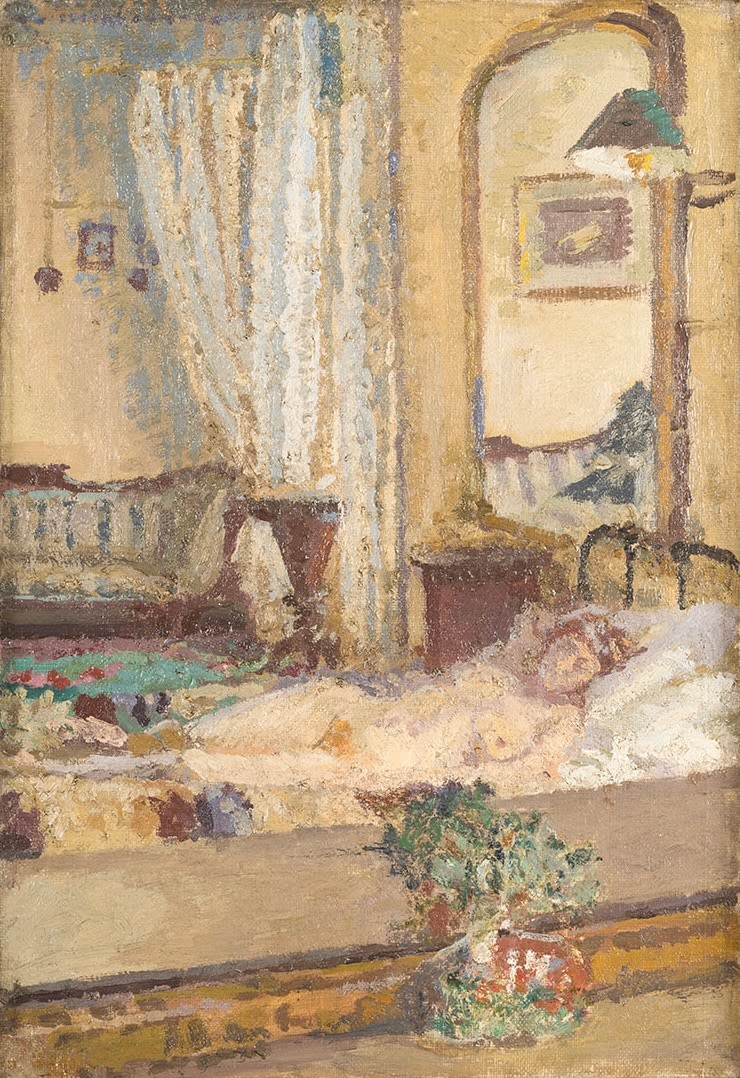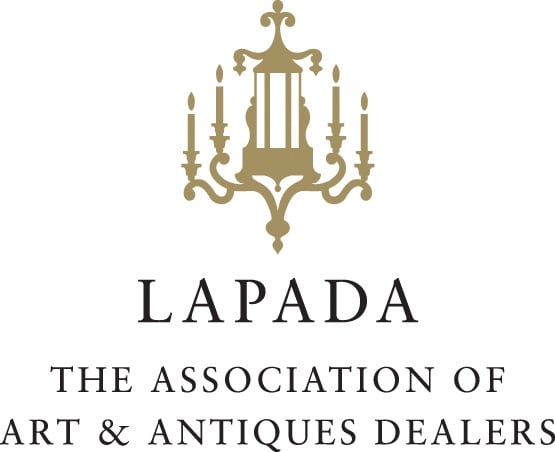Spencer Frederick Gore 1878-1914
Framed: 46 x 35.5 cm.; 18 x 14 in.
Reflections: Female Nude in an Interior is an intimate work which demands closeness from its viewer; the impasto texture and rich, bold colouring allows a painting of its scale great depth and perspective. The nude figure reclines against white bed linen, her form illuminated by soft, natural light. The room’s furnishings, a metal bedstead, patterned wallpaper and domestic objects, are rendered in warm, earthy tones, establishing an atmosphere of bourgeois comfort. We are not in fact looking directly at the figure as a first impression gives, but as denoted by the mantlepiece and gilt mirror frame to the bottom edge, a reflection of the nude, creating spatial complexity.
The painting reveals the close collaboration between Walter Sickert and Gore during this period – a time when both artists shared studios, models and furniture in their exploration of intimate interior scenes. Gore had first met Sickert in 1904 on a trip to Normandy where the older artist was resident. Enthused by the new generation of painters within Gore’s circle, Sickert returned to London in 1905, laying the foundations for the emergence of the Camden Town Group in 1911 (of which Gore became its President).
Sickert encouraged Gore to paint in a studio rather than the more typical impressionist practice of en plein air and passed on his passion for depicting everyday urban life. Unlike Sickert’s more psychologically charged Camden Town series, Gore’s interpretation exhibits a sensuous restraint. The painting stands as an evolution from English Impressionism towards Post-Impressionist experimentation, evident in the bold colour palette and structural composition. Through meticulous observation and chromatic sophistication, Gore achieved what Sickert described as the ability to ‘take a flint and wring out attar of roses,’ creating art from everyday existence.
While painting outside during the cold winter months, Gore contracted pneumonia and died in March 1914 aged thirty-five, abruptly ending a career which had led such a central role in the advancement of British art at the turn of the twentieth century, to which the present work testifies.
Provenance
Peter Nahum, London
Private Collection, 1987 (purchased from the above)
Private Collection
Literature
Walter Sickert, A Perfect Modern, London, New Age, 1914Albert Rutherston, From Orpen and Gore to the Camden Town Group, London, Burlington Magazine, vol.83, no.485, 1943
Jack Wood Palmer, Spencer Frederick Gore 1878–1914, Exhibition catalogue, London, Arts Council, 1955
Frederick Gore, Spencer Frederick Gore 1878–1914, London, Anthony d’Offay Gallery, 1974
Wendy Baron, The Camden Town Group, London, Scholar Press, 1979
Walter Sickert, The Complete Writings on Art, Oxford, Oxford University Press, 2000
Nicola Moorby, ‘Gauguins and Connoisseurs’ in Modern Painters: The Camden Town Group, exhibition catalogue, London, Tate Britain, 2008
Join our mailing list
Be the first to hear about our upcoming exhibitions, events and news
* denotes required fields
We will process the personal data you have supplied to communicate with you in accordance with our Privacy Policy. You can unsubscribe or change your preferences at any time by clicking the link in our emails.




